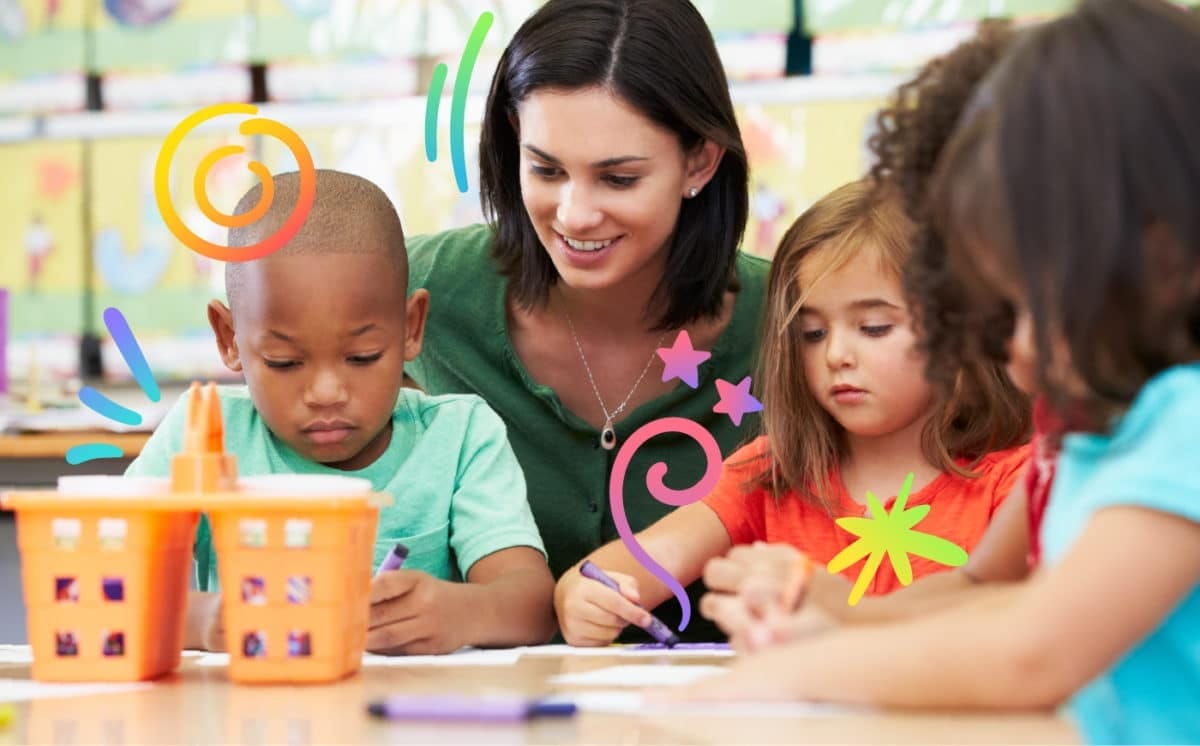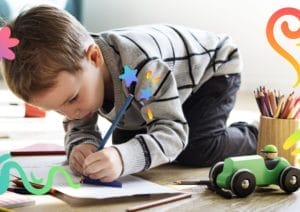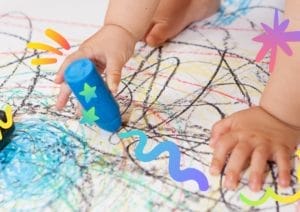As a teacher, you should strive to create a creative environment in your classroom. But how exactly do you go about doing that? Learn how to easily transform your classroom into a creative space with a few simple ideas!
- Why is creativity so important in the classroom?
- Give a variety of materials and tools to create
- Use flexible classroom layouts
- Decor the classroom with an immersive theme
- Take your lessons outside
- Create cross-curricular lessons
- Ask for outside-the-box assignment formats
- Let kids work in teams
Why is creativity so important in the classroom?
It’s impossible to imagine a successful classroom without the use of creativity:
- It is an essential part of personal and intellectual development. It allows children to express themselves, to think outside the box, and to approach problems in unique and innovative ways.
- Creativity also fosters critical thinking and problem-solving skills, which are important for success in school and in life.
- It is an important tool for engaging students and making learning fun and interesting. By incorporating creativity into the classroom, teachers can create a more dynamic and enjoyable learning environment for their students.
- Finally, it is important for preparing children for the future. As the world becomes more complex and unpredictable, the ability to think creatively and adapt to change will be increasingly valuable.
How to help kids be more creative in the classroom
To be creative, children need a safe place to play, be independent, and take risks. Teachers should try to make their classrooms like this. So here you’ll find some ways to help your students grow and develop their creativity.
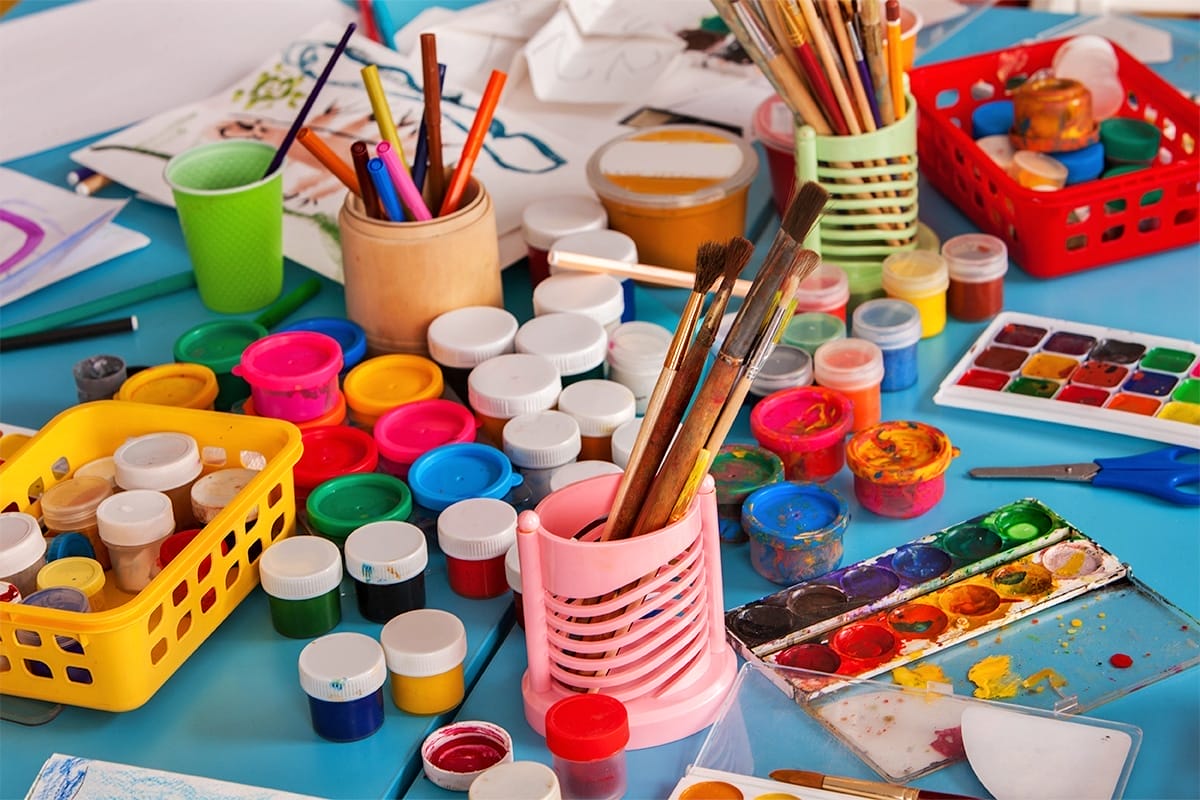
Give a variety of materials and tools to create
Offer kids a variety of things they can use to create and express themselves, such as:
- Art supplies: paints, markers, watercolor, poster paints, tempera sticks, magazines for collage, clay, colored papers, etc.
- Musical instruments: drums, flutes, maracas, xylophones, and recorders
- Construction materials: blocks, plastic bottles, cardboard, wood sticks and scissors
- Technology can be a powerful tool: computers, tablets, and other devices to create digital art, music, and videos, and to explore a wide range of creative possibilities
- Other materials: puzzles, games, books, and other stimulating and engaging resources that can inspire students to think creatively and express themselves.

Use flexible classroom layouts
There are several flexible classroom layouts that can encourage child creativity. Try to create multiple learning centers within the classroom, each with a different focus or activity. For example, there could be an art center, a reading center, and a science center, where children can move freely and choose the activities that interest them.
Another layout is to arrange the furniture in the classroom in a way that allows for flexibility and movement. For example, the chairs and tables could be arranged in a circle or square, rather than in rows, so that children can easily collaborate and interact with each other.
Additionally, some teachers have used “loose parts” – such as blocks, fabrics, and natural materials – to create open-ended play and learning environments that allow children to explore and create in their own way.
👉 See 12 Classroom Layout Ideas.

Decor the classroom with an immersive theme
Start by picking a theme that students will find interesting and worth their time. This could be a time in history, a cultural theme, or a concept like the ocean or outer space. Once you’ve decided on a theme, you can use a variety of decor pieces to make a room feel like it’s part of the theme. This could include posters, murals, and other visual displays that go with the theme, as well as props and other things that students can touch.
You can also use parts of the theme in the classroom’s furniture and layout, like making a “cave” for a prehistoric theme or a “spaceship” for an outer space theme. By making a consistent and interesting environment, you can help students feel more involved in the theme and inspire their creativity and learning.
👉 Check classroom decoration ideas at Pinterest
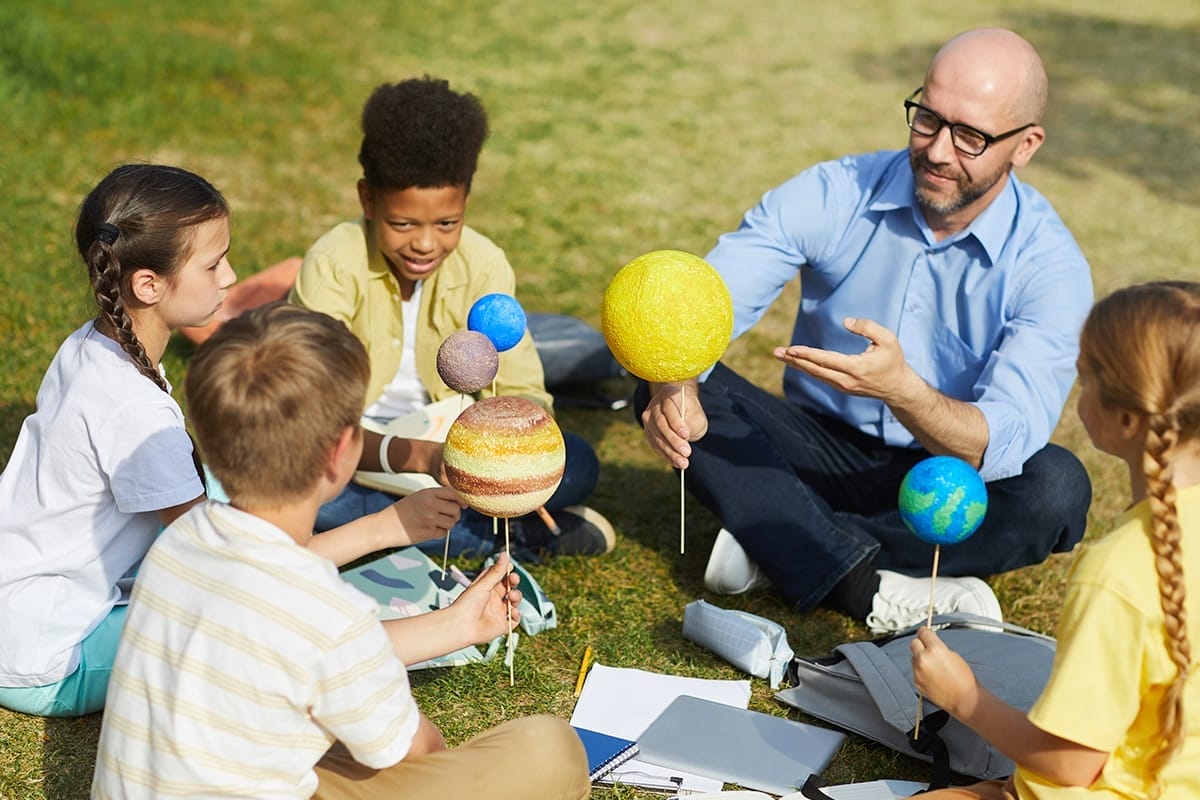
Take your lessons outside
Taking your teaching outside when the weather is nice provides students with a change of scenery and a break from the traditional classroom environment. This can help to engage students and make the lesson more interesting and memorable.
Kids can connect with nature and the outside world, which can foster a sense of curiosity and wonder. It also provides opportunities for hands-on, experiential learning, which can be more effective than traditional methods in some cases. Additionally, teaching outside can promote physical activity and healthy habits, as students are more likely to be active and engaged when they are outside.
Outdoors teaching provide opportunities for interdisciplinary learning, as lessons can incorporate elements of science, art, and other subjects in a natural setting.
Choose active, exploratory activities that you can’t do indoors and think about starting an outdoor project to force children to go outside on a regular basis.
👉 See outdoor learning ideas
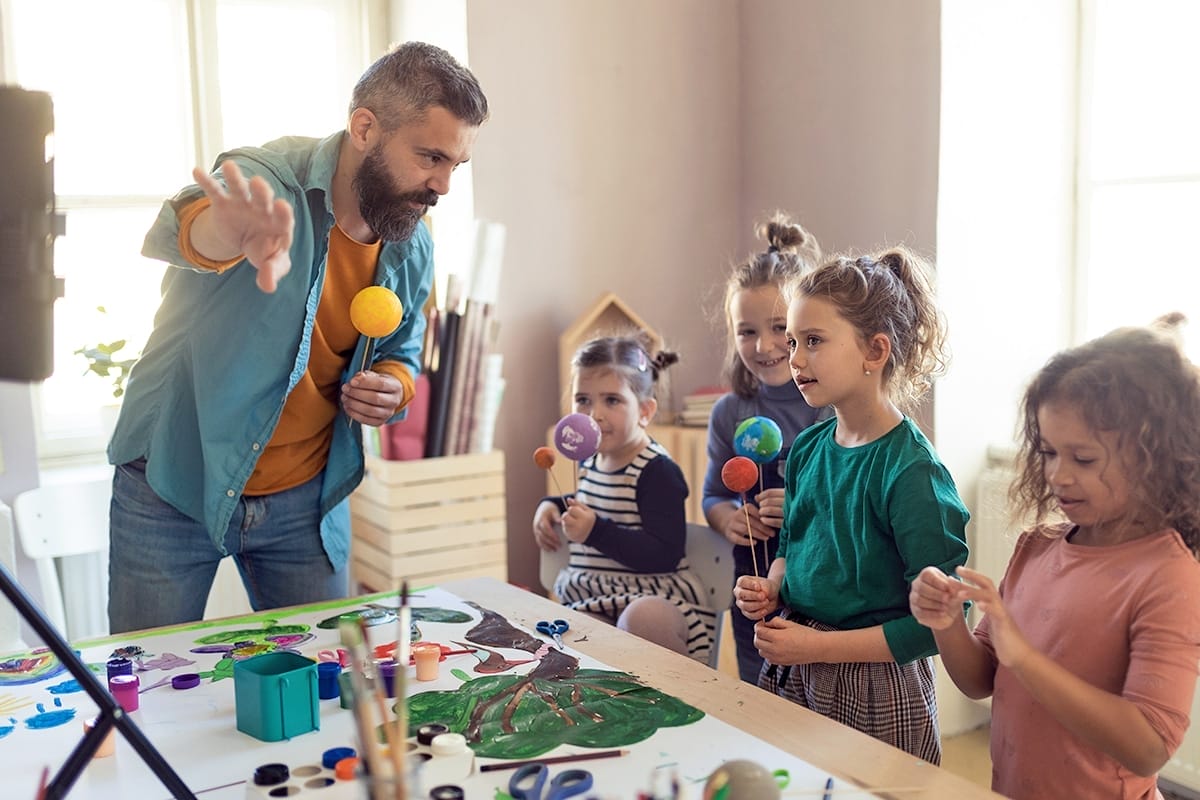
Create cross-curricular lessons
Lessons that cover more than one subject or area of study are called cross-curricular lessons. They can make learning more complete and meaningful, as well as help students learn important skills:
- They give a more complete picture of the world and can help children see how different things fit together.
- By doing activities that involve more than one subject, kids practice critical thinking, problem-solving, and creativity in different situations, which can help to strengthen and deepen their understanding.
- These lessons are more important and useful in the real world. This helps them get ready for the challenges and chances they will face when they leave school.
There are many possibilities for cross-curricular lessons for children. The key is to find activities that help students learn and develop important skills while combining different subjects in a meaningful and interesting way. Here are a few examples to help you get ideas:
- Combine science and art by having students create their own weather instruments, such as rain gauges or wind vanes.
- Combine math and history by having students create a timeline of important events in a particular period of history.
- Combine language arts and social studies by having students write a story set in a different country or culture.
- Combine physical education and music by having students create a dance or movement routine to a particular song.
👉 Discover thousands of cross-curricular lessons and activities for all grade levels
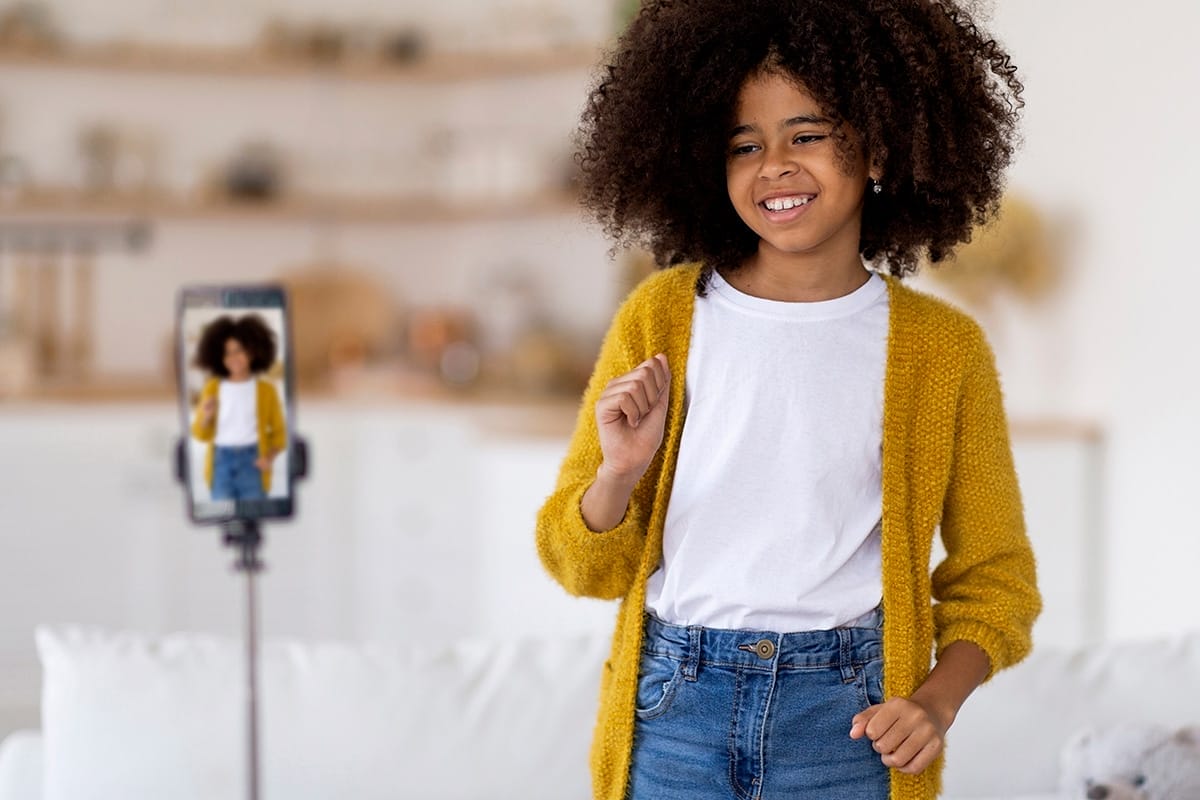
Ask for outside-the-box assignment formats
Instead of making every kid write an essay to show they understand a topic, why not let them choose a format they like as long as it meets your requirements?
The key is to find formats that align with your learning objectives and that allow students to apply their knowledge and skills in creative and challenging ways:
- Creating a podcast or radio show instead of having your students write a traditional essay or report.
- Designing a board game or video game that tests their knowledge of a certain subject, rather than giving traditional tests or quizzes.
- Creating a video or movie instead of giving a written presentation or speech.
- Replace a traditional research project with the challenge of building a model or prototype that shows a concept or solution.

Let kids work in teams
Classrooms should regularly incorporate team building activities. Teams provide a supportive and collaborative environment where ideas can be shared and discussed freely, while also offering a wide range of ideas and experiences that help each other think more creatively.
There are many chances to work in groups in the classroom, both as part of the formal lessons and on their own:
- Make a school community garden with kids working in groups to plan, design, and build.
- Make a board game or card game that teaches something about a specific topic.
- Plan and implement a community service project that addresses a local need or issue.
- Write and publish a class newspaper or magazine.
- Design and build a website or app.
- Write and illustrate a book or comic about a specific topic.
In conclusion, there are many ways to make the classroom a creative place that helps and encourages children to learn and grow. Teachers can make their classrooms interesting, challenging, and fun for kids by using techniques like flexible seating, project-based learning, and cross-curricular lessons. It’s also possible to build a sense of collaboration, ownership, and creativity in the classroom by giving students chances to work in groups and pursue their own interests and passions. Overall, educators can help their students learn the skills, knowledge, and attitudes they need to be successful in today’s world by making the classroom a place where creative thinking can thrive.

